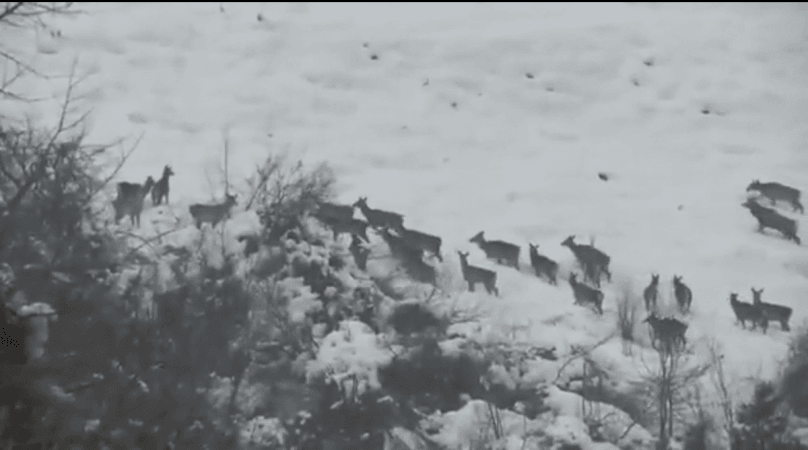On the eve of World Wildlife Day, a video posted by a senior officer of the J&K Wildlife Department has rekindled a ray to hope to increase the population of endangered Hangul in the Union Territory of Jammu and Kashmir.
The Jammu and Kashmir Government has already initiated several steps during the last 10 years for the conservation of Kashmir Stag, known as Hangul which is on the verge of extinction.
Raashid Naqash, a senior officer of the J&K Wildlife Department posted a video on his social media account showing a large herd of Hangul in Kashmir Valley.
"When I see a Hangul herd like this in Dachigam, future seems bright!" Raashid Naqash, Wildlife Warden, tweeted while posting a video in which around 50-strong Hangul herd is moving on the snow-covered slopes of Dachigam national park in Zabarwan mountain range.
When I see a Hangul herd like this in Dachigam, future seems bright! pic.twitter.com/80NTm8j3xC
— Raashid Naqash (@hangulnaqash) March 1, 2022
This video has brought a smile to the faces of the officers of different departments engaged in the conservation of an endangered species.
Authorities believe that the size of the herd is very significant and there will be at least several more herds like these in other parts of the national park, which are inaccessible to humans as of now due to snow.

Efforts to save Hangul from extinction yield encouraging results
This video has given hope that the conservation efforts of the Jammu and Kashmir government have started yielding positive results
The population of this endangered species of Hangul has registered an increasing trend in the latest census conducted by the Wildlife Department.
For the last some years population of Hangul is increasing. In the year 2006, the estimated population of Hangul was between 117 to 190 which has jumped to 261 in the year 2021 census. As per the census conducted in March 2021 population of Hangul has registered a marginal increase in the Kashmir Valley. It is now 261, compared to 237 recorded in 2019.
Declared as "critical endangered species" by IUCN
Known as Kashmiri Red Stag or Hangul has already been declared as "critical endangered species" by the International Union for Conservation of Nature (IUCN).
In the year 2017, the J&K government had admitted that the status of Hangul is "critical" and the population of Kashmir Stag has declined to a meager 162 from 5000 as per the latest census conducted in 2015.

The then J&K government had submitted a recovery plan to save the endangered Hangul deer from extinction to the Central Government for approval and funding to the tune of Rs 25.72 crores over a period of five years.
The numbers of Hangul were 5000 in the 20th century
Hangul- in the world, exists only at Dachigam National Park and adjoining areas of Kashmir Valley. This deer species was once number around 5,000 at the beginning of the 20th century.
Unfortunately, they were threatened, due to habitat destruction, overgrazing by domestic livestock, and poaching in the post-independent era. As a result, at one point in time, it dwindled to as low as 150 animals in 1970. Such a low population is at a high risk of extinction due to confinement and inbreeding.
- In the 2006 census, the estimated population of Hangul was between 117 to 190.
- The estimated population was between 127 to 199 in the 2008 census.
- In the 2009 census, the estimated population was between 210 to 234.
- In the 2011 census, the estimated population was between 202 to 218.
- The estimated population of Hangul was between 81 to 164 in the 2015 census.
- In the 2017 census, the estimated population was between 184 to 214.
- The population of Hangul was between 202 to 237 in the census conducted in 2019.
- In the latest census conducted in March 2021, the estimated population of Hangul was between 230 to 261
State animal of erstwhile J&K state
Hangul was a state animal of the erstwhile state of Jammu and Kashmir which was bifurcated into two Union Territories of Jammu and Kashmir and Ladakh on August 5, 2019.
It is believed that Hanguls have travelled from Bukhara in Central Asia to Kashmir. In the 1900s, the hangul was found in northern Kashmir, Himachal Pradesh, and Pakistan. Now its range is restricted to the Dachigam National Park near Srinagar.
— Raashid Naqash (@hangulnaqash) March 1, 2022











